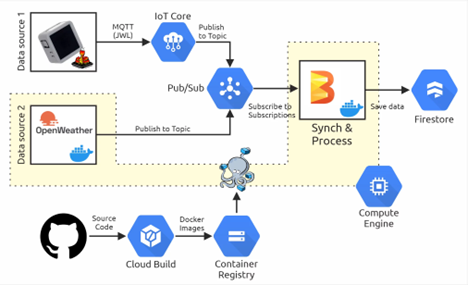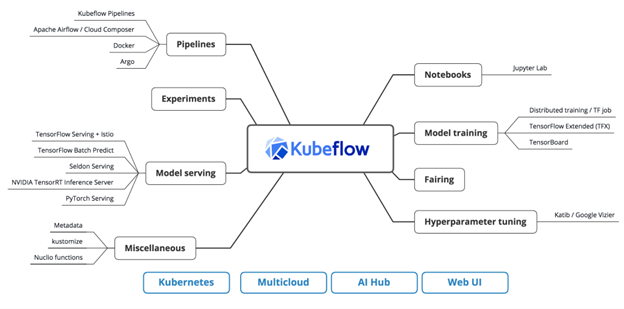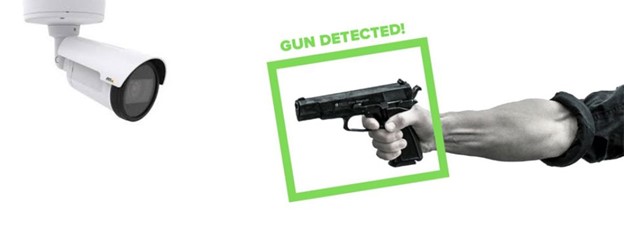Reinventing Security: Computer Vision and Object Detection in Surveillance on Google Cloud - A Case Study
Introduction:
FairPattern Inc embarked on a mission to transform the security landscape by leveraging the capabilities of computer vision and YOLO on GCP. This case study highlights the innovative and technical aspects of using YOLO to improve surveillance, threat detection, and overall security.
Challenges:
- Complex Surveillance Environments: Monitoring vast areas with diverse lighting conditions, weather changes, and potential security threats.
- Timely Threat Detection: The imperative need to quickly identify and respond to security threats or intrusions.
- Minimizing False Alarms: Reducing false alarms to avoid resource wastage and maintain system reliability.
- Integration with Existing Systems: Ensuring seamless integration with the existing security infrastructure on GCP.
Solutions:

- Data Collection and Annotation: FairPattern Inc collected a comprehensive dataset of surveillance footage, encompassing various security threat scenarios. This dataset was meticulously annotated and stored on GCP for YOLO object detection training.
- Object Detection Model Development: FairPattern Inc customized the YOLO (You Only Look Once) object detection model, optimizing it for real-time performance and accuracy. The YOLO model was trained on GCP's AI Platform using GPU acceleration, becoming adept at recognizing and classifying security threats.
- Integration with Surveillance Systems: FairPattern Inc seamlessly integrated the YOLO object detection model into the existing surveillance systems through GCPs pub sub streaming service to acquire real time video fids, enhancing the surveillance systems' capabilities without causing disruptions.
Process:

Kubeflow, a fundamental component of our project's technical infrastructure, played a pivotal role in its success:
- Kubeflow Orchestration: Kubeflow's orchestration capabilities served as the central control center for our machine learning workflow. It streamlined the deployment, monitoring, and management of our security-enhancing components within Kubernetes clusters on GCP.
- Distributed Training: The training of our customized YOLO object detection model demanded substantial computational power. Kubeflow's support for distributed training allowed us to harness GCP's infrastructure effectively. It ensured that GPU resources were optimally allocated during model training, resulting in quicker convergence and higher accuracy.
- Model Versioning: Kubeflow simplified the management of different iterations of our YOLO model. Each model version, along with its corresponding hyperparameters, could be meticulously tracked and stored. This provided valuable insights for model performance comparison and the ability to roll back to previous versions when needed.
- Scalability: As our project expanded to encompass larger surveillance areas and increasingly complex environments, Kubeflow's scalability was instrumental in accommodating the growing volume of surveillance data. This scalability allowed us to maintain real-time processing capabilities even in the face of challenging surveillance conditions.
- Custom Components: Kubeflow's flexibility allowed us to create custom components tailored to specific project requirements. These components seamlessly integrated into Kubeflow Pipelines, simplifying data preprocessing, model training, and deployment.
- Kubeflow Pipelines: Kubeflow Pipelines, a central feature of Kubeflow, were instrumental in the creation of end-to-end machine learning workflows. We designed reusable pipelines that covered the entire spectrum, from data collection and model development to integration with our surveillance systems, real-time alerting, and swift response mechanisms.
- Monitoring and Logging: Kubeflow's integrated monitoring and logging capabilities provided real-time visibility into our system's performance. This proactive monitoring enabled us to swiftly address any issues that arose, ensuring the reliability and responsiveness of our surveillance and security systems.
- Integration with GCP Services: Kubeflow seamlessly integrated with other GCP services that played vital roles in our project. For instance, it facilitated real-time video feed acquisition through Cloud Pub/Sub and triggered serverless event-driven responses to security threats using Cloud Functions. This tight integration enhanced our system's capabilities.
- Security and Compliance: Kubeflow, coupled with GCP's robust security features, ensured that our entire workflow adhered to stringent security and compliance standards—a paramount consideration in the security sector.
- Real-time Alerting and Response: Upon detecting a security threat, the system on GCP generated real-time alerts, enabling swift responses from security personnel or automated security measures, often leveraging GCP's serverless computing capabilities.
Results:


- Improved Threat Detection: FairPattern Inc achieved a substantial enhancement in threat detection accuracy, significantly reducing false alarms and increasing the identification of real threats with the computational power of GCP.
- Swift Response Time: Real-time alerting on GCP enabled rapid responses to security threats, thereby reducing potential risks and damages.
- Resource Optimization: By minimizing false alarms through YOLO-based object detection, the security company optimized the allocation of security personnel and resources efficiently.
- Enhanced Security Infrastructure: The seamless integration of computer vision and YOLO object detection technology, hosted on GCP, elevated the overall capabilities of the surveillance and security systems.
Conclusion:
FairPattern Inc's pioneering and technical use of computer vision and the YOLO object detection model in the security sector, hosted on Google Cloud Platform, underscores the potential of advanced technologies in enhancing safety and threat mitigation. This case study demonstrates how GCP seamlessly integrates with existing security infrastructure, empowering organizations like FairPattern Inc to respond swiftly to security threats and safeguard their assets effectively. By orchestrating YOLO-based object detection for security on GCP, FairPattern Inc has set a precedent for the future of surveillance and threat prevention in the cloud era.
